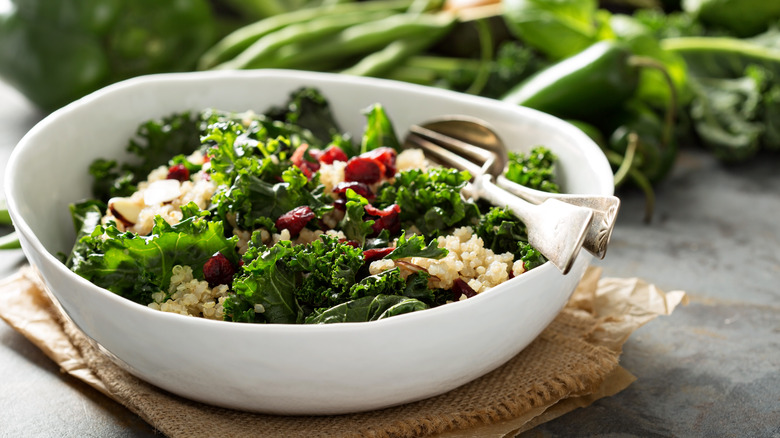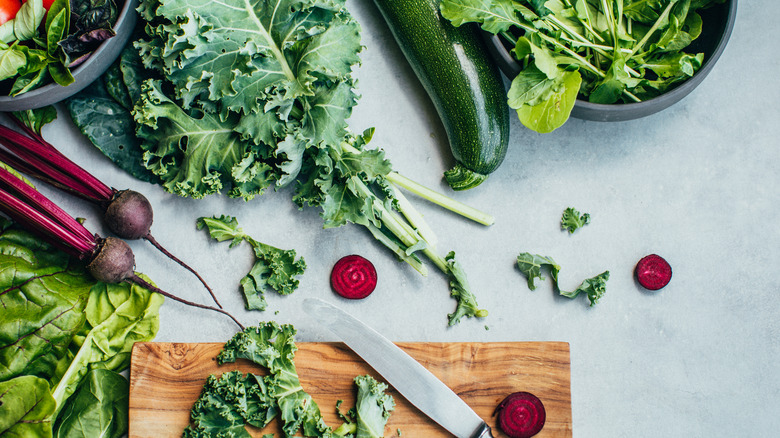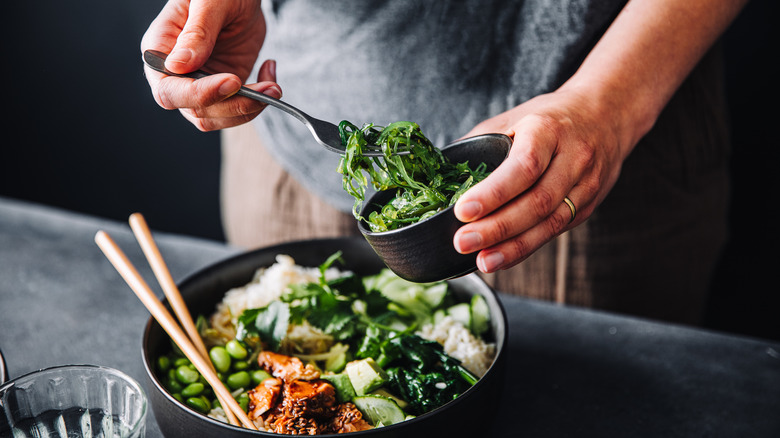What's An Astronaut Space Salad, And How Can You Enjoy One On Earth?
Ever wonder what astronauts eat in space? Contrary to what one might expect, these brave men and women don't live on canned food. Their diet is actually quite varied and includes over 100 foods, including cookies, fresh produce, and nuts. Fresh fruits and vegetables are stored in refrigerators, while meat and dairy undergo ionizing radiation to stay fresh longer. Other foods are canned, dehydrated, or packed in airtight containers.
Eating a balanced diet is crucial for astronauts, given the physical demands of space travel. With that in mind, scientists created a salad to support astronauts' nutritional needs. "We have simulated a mix of six to eight crops that deliver all the required nutrients that an astronaut needs, which is different from what people need on Earth," said researcher Volker Hessel in an interview with The University of Adelaide. The best part is anyone can recreate the so-called astronaut space salad at home to reap its benefits.
What does a space salad look like?
Space food used to be pretty bland in the early days of space travel. For example, Yuri Gagarin and his team ate liver paste in the 1960s, while the Apollo 16 crew survived on freeze-dried foods in the 1970s. But times have changed, and the latest developments in food science allow astronauts to grow their own greens while in space.
Volker Hessel and his team went one step further and created a space salad made with fresh foods. Researchers analyzed over a hundred plant-based foods but ended up choosing only seven. The ingredients were selected based on their nutritional profile, production requirements, and other criteria. "While there are dozens of crops that can fulfill an astronaut's nutrient requirements, we needed to find those that could pack a punch and deliver the calories needed in smaller portions that could be grown in a small space," explains Hessel.
The astronaut space salad includes all food groups except for animal products. It contains soybeans, peanuts, sunflower seeds, poppy seeds, sweet potatoes, barley, and kale, offering both flavor and nutrition. These ingredients can be grown hydroponically, ensuring access to fresh food during long-duration trips. According to the University of Adelaide, one volunteer who tasted the salad said they'd willingly eat it for an entire week.
Why you should try the astronaut space salad yourself
While you don't have the exact nutritional requirements of an astronaut, you can still benefit from eating more greens and other plant-based foods. The so-called space salad can be a great choice, as it includes a mix of grains, nuts, seeds, veggies, starches, and legumes. For example, soybeans and other protein-packed vegetables can replace meat, fish, and poultry in vegan diets. Moreover, soybean consumption may protect against heart disease, ease menopause symptoms, and improve bone health.
The space salad also contains kale, a superfood rich in manganese, fiber, antioxidants, and B-complex vitamins. Like other cruciferous vegetables, it supports immune function and may reduce cancer risk. Another key ingredient is barley, a grain that may help lower cholesterol levels, improve glycemic control, and increase lifespan, according to 2019 evidence published in the journal Nutrients. Peanuts and sunflower seeds are loaded with fiber, protein, and heart-healthy fats, while sweet potatoes can be a good source of complex carbs.
Luckily, you don't have to be on a spaceship to reap these benefits. Simply mix those seven ingredients in a salad bowl or, better yet, toss them with olive oil, apple cider vinegar, salt, and spices. You can also add Dijon mustard, Greek yogurt, or pesto to the mix. If you're short on time, use the healthiest store-bought salad dressings for extra flavor. Enjoy the salad as is, or serve it with roasted chicken breast, grilled salmon, boiled eggs, or tuna to get more protein.


